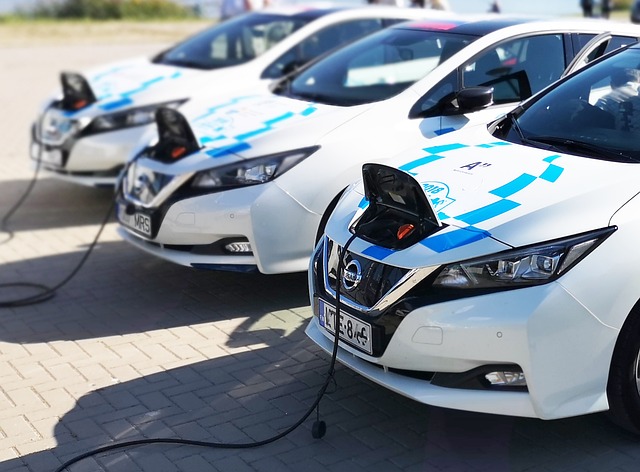Electric vehicles (EVs) have emerged as a promising solution to combat climate change and reduce greenhouse gas emissions. As the world transitions towards a sustainable future, governments and organizations are increasingly offering incentives to promote the adoption of electric vehicles, particularly among businesses. These incentives come in the form of tax breaks and financial benefits, encouraging companies to embrace electric mobility. This article explores the various electric vehicle incentives available for businesses, highlighting the advantages they bring and the positive impact on the environment and the economy.
Tax Breaks for Businesses:
Federal Tax Credits: Many countries provide federal tax credits for businesses that purchase electric vehicles. These credits can significantly reduce the overall cost of acquiring EVs. For instance, in the United States, businesses may be eligible for a federal tax credit of up to $7,500 per EV, depending on the battery capacity and model. These tax credits serve as incentives for companies to invest in cleaner transportation options.
Accelerated Depreciation: Some countries allow businesses to accelerate the depreciation of EVs, enabling them to recover the vehicle’s cost more quickly. This reduces the taxable income for businesses, resulting in significant savings.
Reduced Operating Costs: Electric vehicles have lower operating costs compared to their conventional counterparts. Businesses can benefit from reduced fuel expenses, as the cost of electricity is generally lower than that of gasoline or diesel. Additionally, EVs require less maintenance due to fewer moving parts, leading to potential savings on repairs and servicing.
Financial Benefits for Businesses:
Grants and Subsidies: Many governments and local authorities offer grants and subsidies to businesses that adopt electric vehicles. These financial incentives can offset a portion of the vehicle purchase price, making EVs more affordable for businesses. These grants and subsidies may vary in amount and eligibility criteria, so it’s essential for businesses to explore available options in their region.

Charging Infrastructure Support: Governments and utility companies often provide financial assistance for the installation of charging infrastructure at business premises. This can include grants for charging station equipment, installation costs, and even ongoing maintenance. Such support helps businesses establish their charging infrastructure, ensuring convenient access to charging for their electric vehicle fleets.
Reduced Toll and Parking Fees: Some cities and municipalities offer reduced or waived toll fees and parking fees for electric vehicles. Businesses can take advantage of these incentives, potentially saving substantial amounts of money on transportation costs, particularly in urban areas with high congestion and expensive parking rates.
Access to HOV Lanes: In certain regions, electric vehicles are granted access to high–occupancy vehicle (HOV) lanes, regardless of the number of passengers. This allows businesses with EVs to enjoy faster commute times, increased productivity, and reduced congestion, further incentivizing the adoption of electric vehicles.
Positive Brand Image and Marketing Opportunities: Embracing electric vehicles demonstrates a commitment to sustainability and environmental responsibility. Businesses can leverage this positive brand image to differentiate themselves from competitors, attract environmentally conscious customers, and gain marketing advantages. Being seen as a socially and environmentally responsible organization can enhance brand reputation and customer loyalty.
Considerations and Future Outlook:
While electric vehicle incentives provide numerous advantages, businesses should consider certain factors before transitioning their fleets:

Charging Infrastructure: Adequate charging infrastructure is essential to support an electric vehicle fleet. Businesses need to assess their charging needs and plan for the installation of charging stations to ensure seamless operations and minimize any potential charging delays.
Fleet Analysis: It’s crucial for businesses to evaluate their specific transportation requirements, including driving distances, load capacity, and charging capabilities, to determine the suitability of electric vehicles for their operations. This analysis will ensure that EVs meet their business needs effectively.
Maintenance and Training: While electric vehicles generally require less maintenance, businesses should consider any additional training or resources required for maintenance staff to handle EV-specific repairs and servicing.
The future of electric vehicle incentives for businesses looks promising. As governments and organizations continue to prioritize sustainability and emissions reduction, the availability and scope of incentives are likely to expand. Businesses can capitalize on these incentives to reduce their environmental footprint, lower operating costs, and gain a competitive edge.
Conclusion:
Electric vehicle incentives for businesses, including tax breaks, financial benefits, and grants, are crucial catalysts for the widespread adoption of electric mobility. These incentives not only help companies reduce their carbon footprint but also provide financial advantages, such as tax credits, reduced operating costs, and access to grants. Embracing electric vehicles aligns businesses with sustainability goals, enhances brand image, and contributes to a cleaner and greener future. By taking advantage of these incentives, businesses can drive the transition towards a sustainable transportation sector and reap the long-term benefits of electric mobility.

